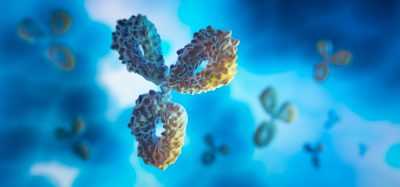Mechanisms underlying pioneer TF-mediated gene repression
Posted: 22 January 2024 | Ellen Capon (Drug Target Review) | No comments yet
Researchers have made surprising and important findings that may influence organoid and cell reprogramming studies.

A new study by scientists at the Cincinnati Children’s Hospital Medical Center elucidates how pioneer transcription factors (TFs) function. The team developed a new CRISPR interference (CRISPRi) model to investigate how the pioneer TF FOXA controls human endoderm differentiation during liver development, as well as how the pioneer TF OCT4 influences the behaviour of pluripotent stem cells.
Pioneer transcription factors
Every human cell has over 200 transcription factors expressed inside of them. Pioneer TFs act inside precursor cells during the early stages of foetal development, driving them to make mature cells that become part of the heart, spine, liver and so on. Pioneer TFs can recognise their target DNA sequences in compacted heterochromatin and can trigger remodelling of the adjoining chromatin landscape to provide accessibility to nonpioneer TFs.1
Discovering how to make use of pioneer transcription factors was a significant breakthrough, making it possible to programme or reprogramme cell fate more efficiently and with higher fidelity in vitro. Scientists were able to derive pluripotent stem cells from any type of adult cell by identifying the crucial pluripotent pioneer TFs, and then instructing them to make other types of cells to form organoids. Also, tissue-specific pioneer TFs can directly reprogramme one adult cell type into a targeted cell type without passing through a pluripotent state.
Pioneer TF-mediated reprogramming of skin and other accessible somatic cells holds immense promise for personalised disease modelling and regenerative medicine. However, a considerable challenge is achieving enough gene repression of the original cell type. Inadequate repression frequently results in the formation of ‘dead-end’ cells or hybrid cells, which limits translational applications.
Dr Makiko Iwafuchi, a member of the Division of Developmental Biology and the Center for Stem Cell & Organoid Medicine at Cincinnati Children’s, stated: “As we gain a more comprehensive understanding of the mechanisms underlying pioneer TF-mediated gene repression, it will greatly enhance the precise manipulation of cell fate in cellular programming and reprogramming.”
Prior to this study, most experts believed that pioneer TFs functioned primarily by activating genes to send cells in a desired direction. However, it is now known that genetic programming has many alternative pathways that must be actively shut down.
FOXA
When pioneer TFs function correctly, they cut off these alternative pathways so the cell develops as intended. Using their new CRISPRi model, the researchers found that when FOXA function was disrupted, the cells followed multiple development pathways. FOXA was initially discovered in the mouse embryonic endoderm, where it binds to an enhancer sequence at a silent liver gene.2 When FOXA functioned normally, the cells stayed on track. From this, the team concluded that FOXA prevents alternative lineage.
FOXA receives help with repressing access to alternative pathways from another TF named PRDM1 and other epigenetic repressors. In pluripotent cells, the pioneer TF OCT4 performs a similar repression function by working with a related TF called PRDM14.
Dr Iwafuchi commented that the central role of FOXA and its ability to repress development pathways were surprising and important findings that could influence future organoid and cell reprogramming studies.
A vital further proof of concept was discovering a similar relationship occurring with OCT4. This TF was already known to be among the pioneer TFs allowing the reprogramming of somatic cells into pluripotent stem cells.
Advancing technology
The researchers demonstrated that two pioneer TFs coordinate with PRDM TFs to safeguard cell fate, so it is likely that other TFs have similar relationships. When these are identified, it could be possible to produce organoids and other engineered tissues in larger volumes with higher degrees of consistency and fidelity to scale up the technology.
This study was published in Molecular Cell.
References
1 Drouin J, Mayran A. Pioneer transcription factors shape the epigenetic landscape. Journal of Biological Chemistry. 2018 September [2024 January 15]; 293(36):13795-804. Available at: https://www.jbc.org/article/S0021-9258(20)30933-9/fulltext
2 Mango SE, Zaret KS. Pioneer transcription factors, chromatin dynamics, and cell fate control. Current Opinion in Genetics & Development. 2016 April [2024 January 15]; 37:76-81. Available from: https://www.sciencedirect.com/science/article/abs/pii/S0959437X15001446
Related topics
CRISPR, DNA, In Vitro, Organoids, Personalised Medicine, Regenerative Medicine, Stem Cells
Related organisations
Cincinnati Children's Hospital Medical Center
Related people
Dr Makiko Iwafuchi (Cincinnati Children's)







